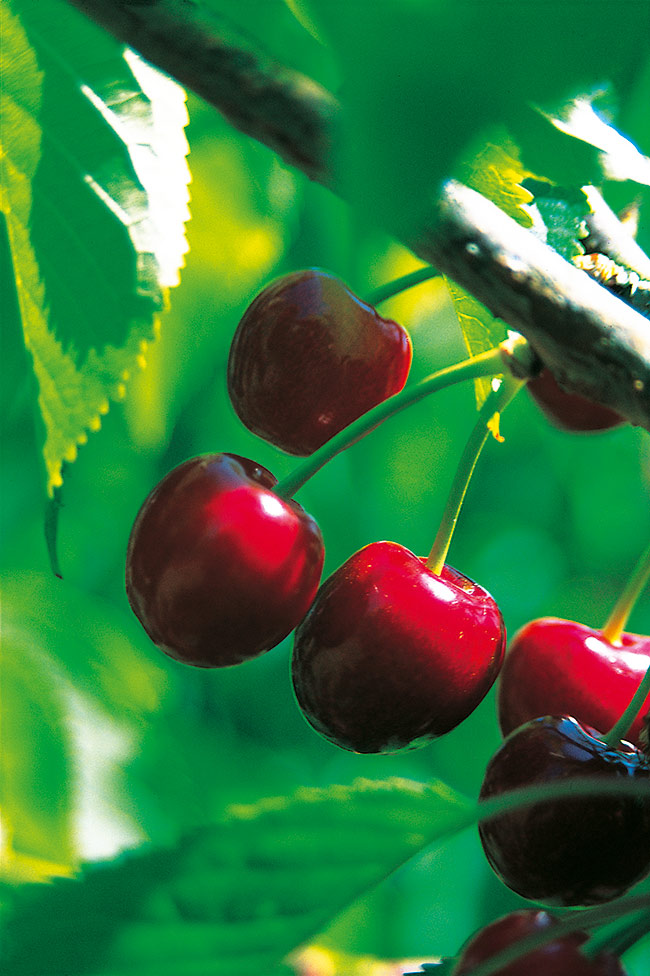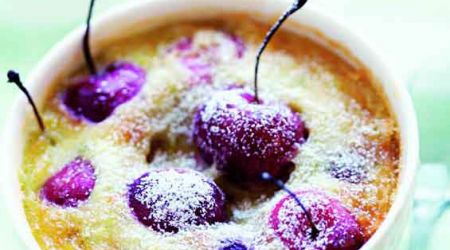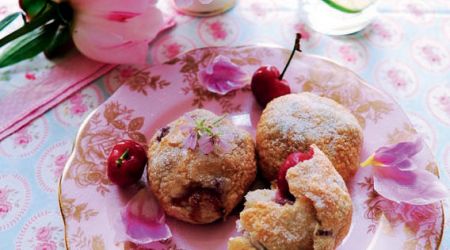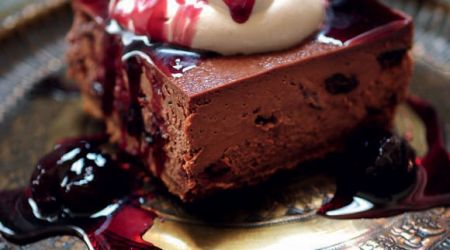Cherries
Despite their fleetingly short season, Helen Hokin knows this delicious summer fruit is well worth the wait with recipes by Linda Tubby
In Japan, when the cherry blossom flowers it is cause for huge celebrations. People congregate for hanami or flower viewings and hold picnics and parties under the pink and white boughs during this beautiful but briefest of seasons, otherwise known as sakura. To the Japanese, the short cherry season symbolises the fleeting nature of human life. They have a saying: “The cherry is among flowers as the samurai is among men.” (The samurai warrior was expected to sacrifice his life for his master at any given moment). Perhaps it is because of its short season that the eventual ripening in mid-June of this buxom, heart-shaped fruit has become so keenly anticipated.
The Chinese were first to celebrate the annual ripening of cherries over 3,000 years ago. Millennia later, by way of Turkey via Italy then France, cherry trees landed in Britain around 1AD. But it was Henry VIII who really got the English cherry industry officially running – the infamous gourmet had his royal fruiterer plant hundreds of trees in Tenyham, Kent, in 1533 and for the next 400 years the abundant fruit was cause for celebration amongst the English too.
By the mid-20th century, over 20,000 cherry trees were flourishing across the Kentish Garden of England. But whether it was due to the variety of trees being grown (huge tall trees became increasingly difficult to harvest) or high rainfall (moisture on a ripening cherry destroys the fruit by causing it to crack) the industry took a sudden downward turn and by the 1980’s growers had lost up to four-fifths of their crops. After 20 cherry-less years there is now a revival underway. Still in Kent, 300 acres of new varieties are being developed to meet our insatiable appetite for the fruit. Happily, the consumers’ current sense of commitment to buying local and seasonal produce can only help the cause.
English cherries are available from the end of June until the middle of September although, realistically, varieties from abroad will stock our shops and markets this season. From Japan to Argentina, including northern Europe and South Africa en route, cherries grow all over the world. But their fragile temperament dictates precise climatic conditions if the fruit is to survive. They only grow between the latitudes of 30-50 degrees north or south of the equator. This most temperamental of fruits needs rain, but not too much, and warmth, but just the right amount.
Cherries are descended from two wild species: sweet and sour. Although the majority of cherries available today are sweet, many classic recipes such as Black Forest gâteau, kirsch and cherry compote were devised with the more complex-flavoured sour cherry in mind. Early June varieties include Brooks – large firm and juicy with a rich flavour, and Sequoia – deep red, large with good sugar levels. Mid-season, expect to find Bing – enormous, sweet and filled with juice. Late arrivals include Sweetheart and Staccato – both firm to the bite with plenty of good flavour. Look out for the Picota variety from the Denomination of Origin Jerte Valley in Spain. Because it ripens so slowly it develops a deep colour and intense flavour. As it reaches full maturity a protective skin grows between the stalk and the fruit, so when it is plucked from the tree the fruit comes away and the stalk is left on the branch. Its short season runs from mid-June to July.
All that remains now is to bag a handful and whip up something delicious, assuming you’ve managed to resist temptation on the way home. When buying cherries choose those with the stalks still on (with the exception of the Picota variety) as these will keep for longer. Look for plumped up, shiny fruit and stay away from lacklustre cherries which are about to rot. Store them in the crisper section of your fridge, for no more than five days.
And so we head to the kitchen. All-time-classic cherry clafoutis is a light, cherry-studed pudding hailing from Limousin. Although it’s a recipe created for the region’s native sour cherries it works just fine with the sweetest, ripest variety the season has to offer. Simply scatter whole cherries, lightly poached with a slug of kirsch, over the base of a baking tin. Make the clafoutis batter by whisking egg yolks, sugar and ground almonds. Fold egg whites, whisked to the soft peak stage, gently into the batter. Pour over the cherries and bake in a moderate oven till the pudding’s all puffed up, golden and springy to the touch. It stays luscious for up to half an hour but really, why wait? Simply add a generous spoonful of thick cream and dig straight in.
Cherry and almonds make a great match, so pair them in a tart. Smooth a basic cake batter flavoured with ground almonds over a blind-baked shortcrust pastry case, lightly scatter poached cherries over the mix and top with more cake batter. Bake in a moderate oven for 25 minutes and serve in hot slices with cold pouring cream. For Queen Victoria’s Golden Jubilee, celebrity chef Escoffier painted the town red with a recipe created specially for the occasion – cherries jubilee. To recapture the halcyon days of the Empire, gently heat a saucepan of whole fresh cherries, the zest of an orange and a little kirsch. As soon as the fruit starts to soften and release juices dribble them, juice and all, over individual dishes of the best vanilla ice cream you can find.

Recipes
Get Premium access to all the latest content online
Subscribe and view full print editions online... Subscribe



